Recognising different types of birthmarks is important in the context of skin cancer or melanoma. Although the majority of malignant tumours develop in visually unaffected skin, melanoma can develop in an existing birthmark. Mole examination can be done by your skin doctor – visiting the centre of oncology is not the only option.
Significance of moles
The colour of the birthmark does have a meaning. It is determined by various factors, but, if changes in colour are noticed, the mole should be examined by a dermatologist or an oncologist.
- Blue birthmarks – can indicate the presence of the pigment in deeper layers of skin.

- Black birthmarks – indicate dense pigment cell cluster or presence of pigment (melanin) in upper layers of skin.
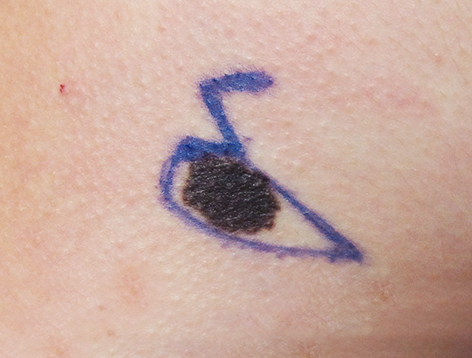
- White birthmarks – also known as halo moles, are moles with a white ring (halo) around them. The loss of the pigment in the skin indicates a reaction of the organism's immune system cells, directed against the pigment cells of the mole. In most events, it is not a symptom of skin cancer, but it should be noted that a similar process can take place when melanoma is present. If the body is covered with several halo birthmarks, they should be examined.
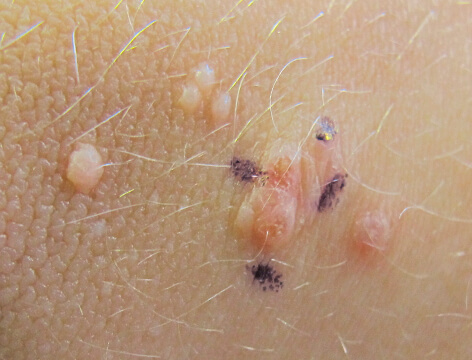
- Red birthmarks – small, raised, red-coloured dots. Not a symptom of any condition. These dots are formed during blood vessel deformation.

- Birthmark redness – indicate the presence of blood vessels, but can also indicate inflammation caused by trauma or infection.
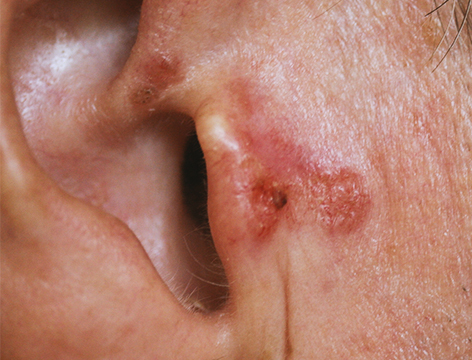
- Two-toned birthmarks – one of the symptoms of malignant moles.
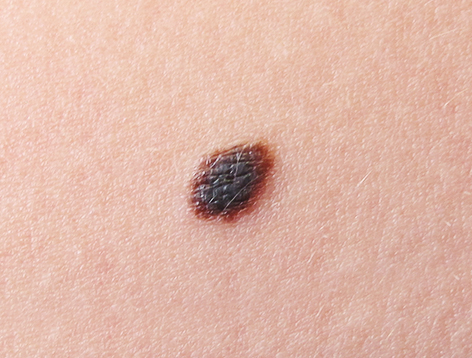
If a birthmark changes its appearance (shape and/or colour), it should be immediately examined by a dermatologist; only an experienced expert can determine the nature of these changes.
Spider moles
Known as spider angiomas, these birthmarks form when small, dilated blood vessels cluster close to the skin surface. Common for liver disease patients or patients with increased feminine hormone levels.
Blood vessel moles
Benign skin tumour (hemangioma) that forms when cells of the inner surface of blood vessels (endothelin cells) multiply. If the innate blood vessel moles are located on face or head, the person is in a high-risk group for developing central nervous system blood vessel tumour; thorough examination is advised.
Birthmark placement
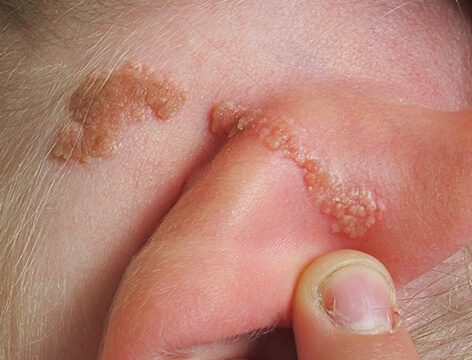
The placement of moles – on the face, hands, ears, fingers, body, etc. – has no direct significance, apart from determining the treatment tactic if the birthmark is malignant, or the person wishes to remove birthmark for aesthetical reasons.
Enlarged birthmarks

Rapid and disproportionate enlargement of a mole, change of appearance, ulceration or swelling can be dangerous skin cancer symptoms (read more on skin cancer). Timely diagnosis of developing malignant skin tumour during dermatologist’s examination can save your life!
Innate moles
Sometimes innate moles are less noticeable during the first months after birth, but they grow in proportion with the child. Such moles can become uneven or raised, or change colour over the course of time.
Innate birthmark sizes:
- Small:
- Medium large: 1,5 – 20 cm
- Large: 20 – 40 cm (for infants - 9 cm on head, 6 cm on body)
- Very large: > 40 cm
New birthmarks
New or acquired moles commonly develop for young people (under age of 25) and children. Sometimes active sunbathing or sunburn can stimulate the development of pigment spots, but it is important to bear in mind that sun-damaged skin is more likely to develop skin cancer.
New birthmarks can differ in their appearance; the visual properties are determined by the placement of melanocytes in skin.
Moles and immunity
Immunity cells target not only viruses and bacteria that are unfamiliar to our organism, but also fight cells that have been modified by our organisms, including cancer cells. Such activity can be observed with halo birthmarks, when immune cells destroy pigment cells, creating a white ring around the birthmark. Individuals with lowered immunity are subject to higher receptiveness to malignant conditions, including skin cancer.
Atypical moles

Atypical moles share visual similarities with melanoma:
- Asymmetry,
- Two-toned colour,
- Uneven borders,
- Diameter > 6 mm.
Some atypical birthmarks may progress into melanoma. Only an experienced dermatologist or oncologist can recognise an atypical mole from melanoma. A high number of atypical moles complicate timely diagnosis of melanoma.
Individuals with >100 birthmarks or multiple atypical birthmarks belong to high-risk group for developing melanoma. It is advised to perform regular birthmark self-examination, as well as examination by a dermatologist, including keeping photographic documentation.
Dangerous moles
Factors that indicate high-risk birthmark development:
- Family members with a high number of birthmarks.
- Increased sun exposure during childhood, especially when intense and periodic (i.e. a child from Latvia acquires dark sun-tan during family holidays to a resort in the south).
- Fair skin.
The majority of new moles are benign skin formations that never turn into melanoma; they do not require medical interference.
The malignant tumour melanoma forms due to malformation of melanocytes that grow and multiply uncontrollably. Although more than 50% of melanoma cases develop in a previously visually unaffected skin, it can also develop in pre-existing birthmarks.
Suspicious moles
Suspicious birthmarks share similarities with malignant skin tumours. These characteristics can be seen with a naked eye, dermatoscope or microscope. Only an experienced skin doctor – dermatologist can tell the difference between dangerous birthmarks and normal birthmarks.
If a mole or birthmark hurts or itches
Sometimes regular traumatisation of a birthmark with clothing (especially a bra) or jewellery (e.g. necklace) can irritate the mole, causing the mole to itch or ache. Since the rapid growth of skin cancer can cause pain or itchiness, it is recommended to examine the mole
If a mole is accidentally torn off, it is recommended to visit a dermatologist for evaluating the nature of the mole (benign vs. malignant). Any remaining tissue can develop a malignant tumour; any partially torn birthmarks have to be periodically observed for growth and development.
It is important to keep in mind that any traumatisation of moles increases the risk of malignant process development!
Hairy moles

Moles can have pronounced hair. It is not recommended to shave or wax hairy birthmarks since it traumatises the birthmark, but the hair can be carefully trimmed with scissors.
Moles "on a leg"
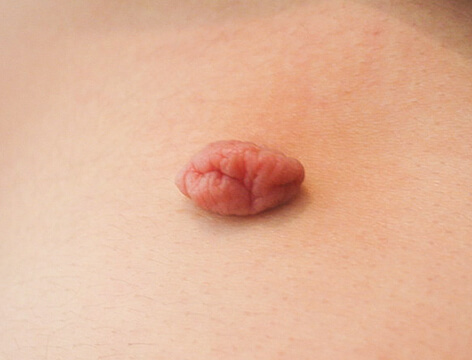
Usually, birthmarks "on a leg" are papilloma. It can develop due to various reasons, and it is recommended to consult a dermatologist to determine the nature of the skin formation.
Benign pigment cell formations
Other benign pigment cell formations include:
- Freckles,
- Simple pigment spot (lentigo simplex),
- Sun pigment spot (lentigo solaris),
- “Coffee with milk” spot (cafe-au-lait).
